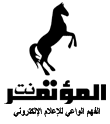Anthony Shadid - SANAA, Yemen (Jun 30, 2007) It is 4 p.m. when Sana'a's Old City shakes off its lunchtime doldrums. Greeting its revival are the cries of vendors and a cascade of car horns, rare channels for unadulterated freedom of expression in the Arab world.
"Three pairs of socks for 100 rials!" Mohammed Faez bellowed at Bab al-Yemen, the city's entrance.
Medieval Baghdad had its gates -- the Gate of the Willow Tree, the Gate of the Moon, the Gate of Darkness. Sanaa's Old City has Bab al-Yemen, the entrance to an antique city. Homes built of sun-dried mud brick rise three or more stories. Intricate friezes dance along the walls and white gypsum in gentle curves and sharp angles ornaments almost every home. There is a brilliance to Yemeni architecture and in the vista through Bab al-Yemen, a millennium-old style merges the most modern houses with their ancient equivalents into disordered perfection.
"There is no better view and no more pleasant atmosphere," Salah Hadi said at his music store.
By 4:30 p.m., the market is in full swing, pouring into the streets on both sides of Bab al-Yemen. Men sit along the entrance, selling a pound of powdery green henna for 200 rials, roughly a dollar.
Beyond them are carts piled with Chinese-made shirts and gold-embroidered belts to carry a traditional dagger known as a jambiya. From Hadi's store, the strains of Yemeni pop music vie with the vendors' cries.
Less than 50 years ago, the walls that meet at Bab al-Yemen encompassed all of Sanaa, then a city of just tens of thousands and more medieval than modern. Today, its residents number nearly two million and the sprawling capital stretches beyond the walls for kilometres in every direction. Bab al-Yemen has somehow managed the transition. Unlike some Arab markets, Bab al-Yemen is still playground and meeting place.
By 5 p.m., men sit on a raised stone platform next to the entrance drinking tea, smoking cigarettes and chewing khat, a mildly intoxicating leaf. The scene is somnolent, the chatter subdued, in part because most of the men seem pleasantly high. As the sun begins its descent, Faez, the 20-year-old sock vendor, joins them.
"Anyone who enters Bab al-Yemen has to stay for a little while," said Ahmed al-Harrazi, sitting on cardboard in his newsstand, where posters of Yemen's president crowd the wall.
The architecture around Bab al-Yemen has changed little in 1,000 years, but the currents of the rest of the Arab world swirl through its alleys.
Satellite dishes atop the mud-brick houses catch the sun's glint. On the walls outside Harrazi's store, there are portraits of Sheik Ahmed Yassin, the assassinated founder of the radical Islamic movement Hamas in the Palestinian territories, superimposed over Jerusalem's Dome of the Rock, the third holiest site in Islam. Next to Yassin is a picture of Saddam Hussein, the former Iraqi president executed in December.
Along the alleys around Bab al-Yemen Cafe, where at 6 p.m. customers fill its rickety benches, other portraits cling to walls. Many are of Hasan Nasrallah, the leader of the Lebanese Shiite Muslim movement Hezbollah, which battled Israeli forces last summer.
"Look in the streets, look in the markets, look in the houses, you'll see him everywhere," said Sadeq Ahmed, a silversmith, leaning back in his chair. "He was the first Arab who defeated Israel."
As the sun sets, a small crowd gathers around vendor Ahmed Zayt as he serves bowls of lentil soup. "It's better for people to come to me than for me to go to them," he said, smiling.
The street lamps soon light up and five minutes later, the sonorous call to prayer begins. Men begin making their way to the nearby al-Radwan Mosque. Mohammed Ali, a 17-year-old denizen of Bab al-Yemen, takes his seat on the stone platform.
The conversation turns to khat and his dislike of it. "When you chew it, you look out here at the city and you think it's Dubai," he said. "I'd rather put a rial in my mouth and chew it instead."
By 6:55 p.m., the mosque has almost emptied. Men in orange overalls sweep the black stone streets near Ali, crafting tidy piles of cigarette butts, scraps of newspapers, bags and plastic teacups. In the dark, light shines through windows of stained glass and alabaster. The bursts of colour hover under a half moon. At Bab al-Yemen, Faez, the sock vendor, stands again at the entrance.
"Three pairs of socks," he cries out. "Three for 100 rials."
Source: The Los Angeles Times, Washington Post News Service
|

